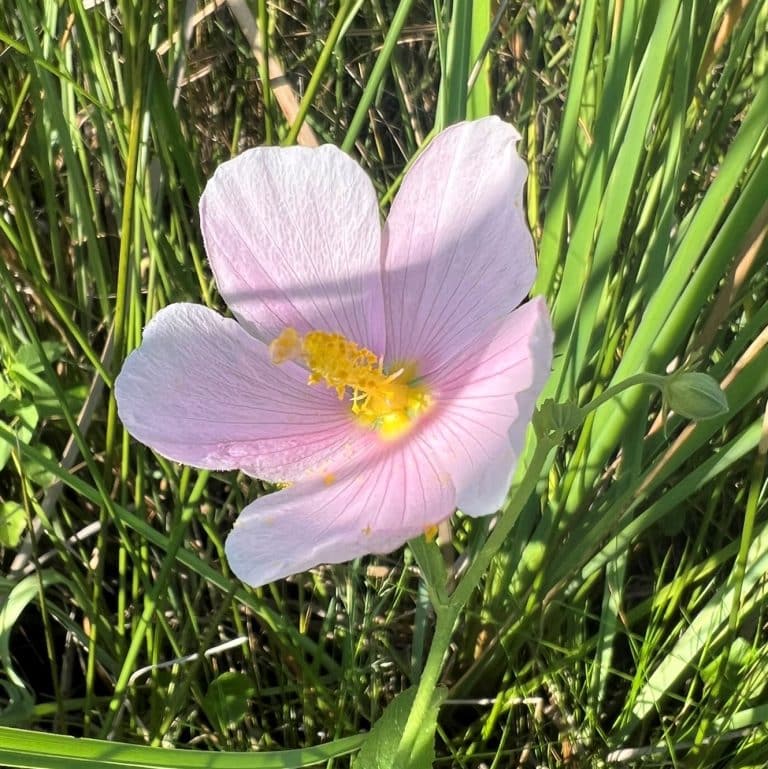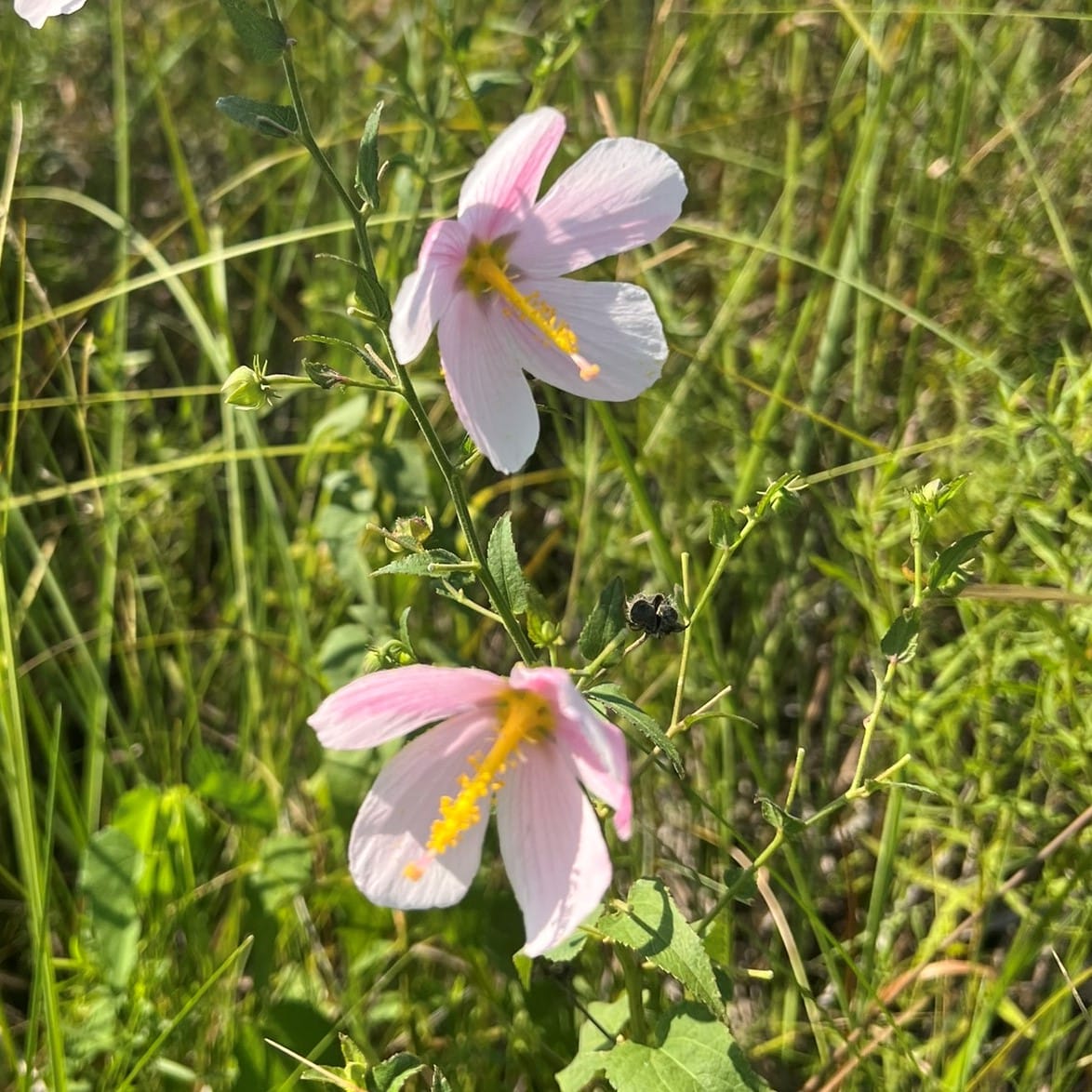Smores are not smores without the marshmallow that holds the treat together. But as with many of our everyday treats, marshmallow’s origin is unfamiliar. But with a name like Marsh Mallow, you have to wonder. And yes, our marshmallow did originate from a concoction made from a relative of our own Saltmarsh Mallow, the bright pink flowers adding color to our tidal marshes in summer.
Of all the scientific names I had to remember in botany courses, one of my favorites is Kosteletzkya virginica. The words have a musical quality that just seems to roll of your tongue. As the plant that bears this name, it is also as beautiful as the words sound.

So, can you make marshmallow from our Marsh Mallow? Sure, if you care to go through the process that early Egyptians and later the French did to create the sweet treat. First you dig up some roots, boil them, add egg whites, and whip it up with honey or sugar. Easy enough, right? Well, although our local hibiscus species are edible and can be used, it is a bit of a chore and would take quite a bit of material.
Egyptians apparently created the first marshmallow treat around 2000 BCE with boiled roots and honey. The French created marshmallow in the 1800’s with egg whites and sugar. Both concoctions used the sap of Althaea officinallis, a mallow of marshes found in Europe, Asia and North Africa. It was a special treat then as it is now, but our modern process is no longer dependent on the mallows of our marshes.
Modern recipes use gelatin, corn syrup, starch, sugar and water to make the glue for our smores. A quick look through the internet will provide basic recipes that can be an interesting activity for children.
In case you were curious, other common members of the hibiscus family in our world include okra, cotton, and Althea, also known as Rose of Sharon, Hibiscus syriacus – a native of Asia. The word Althea is used as a common name for this species. At least two native species of large-flowered mallows (Hibiscus) are also present locally, including Crimson-eyed Rose Mallow (a wetland species) and Comfortroot or Pineland Hibiscus (wet to dry roadsides and pinelands).
So, keep your eyes open for the little pink mallows blooming in a tidal marsh near you and enjoy a couple of marshmallows to thank their relative for this treat.
Hope to see you in our great outdoors!




